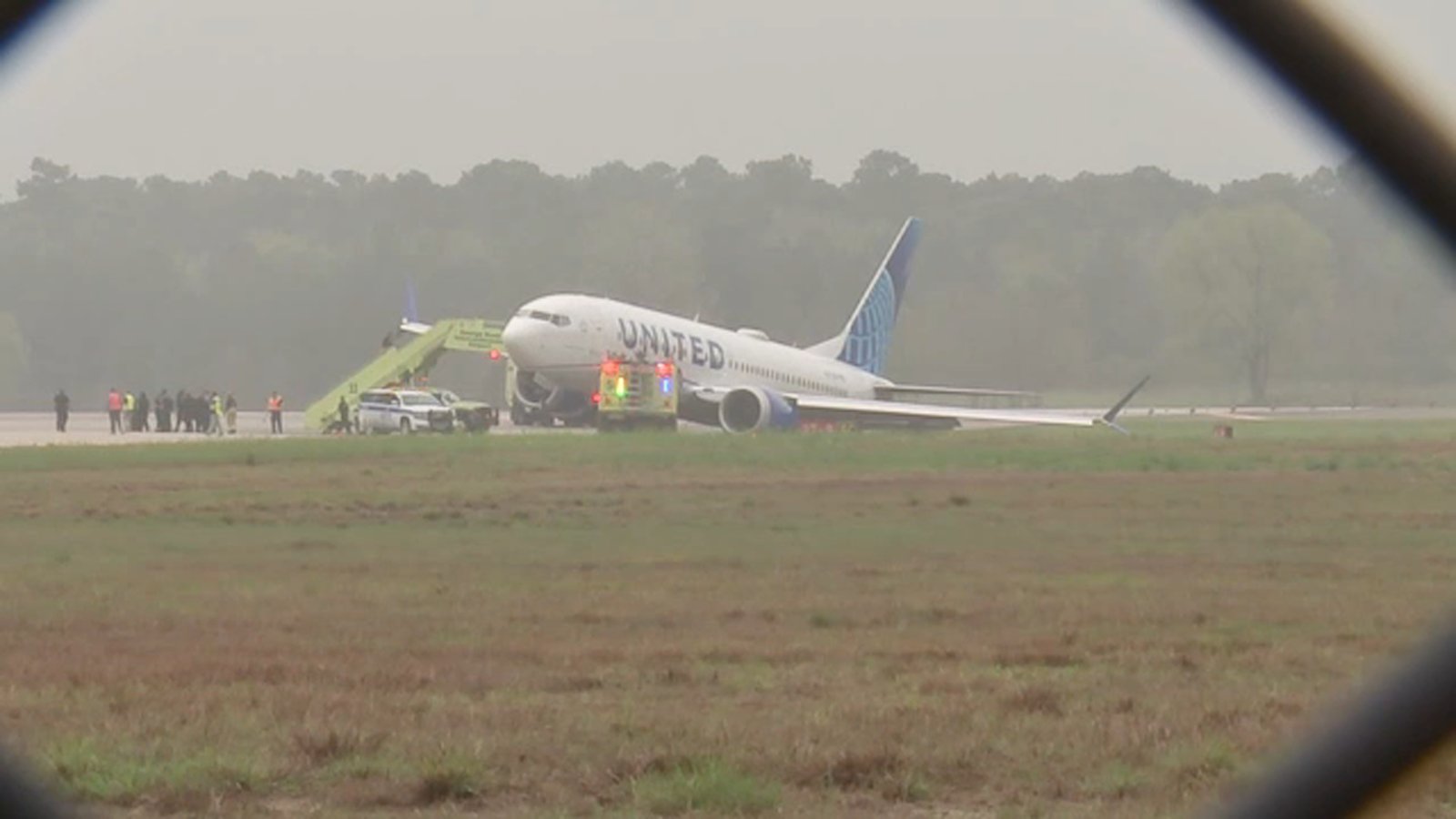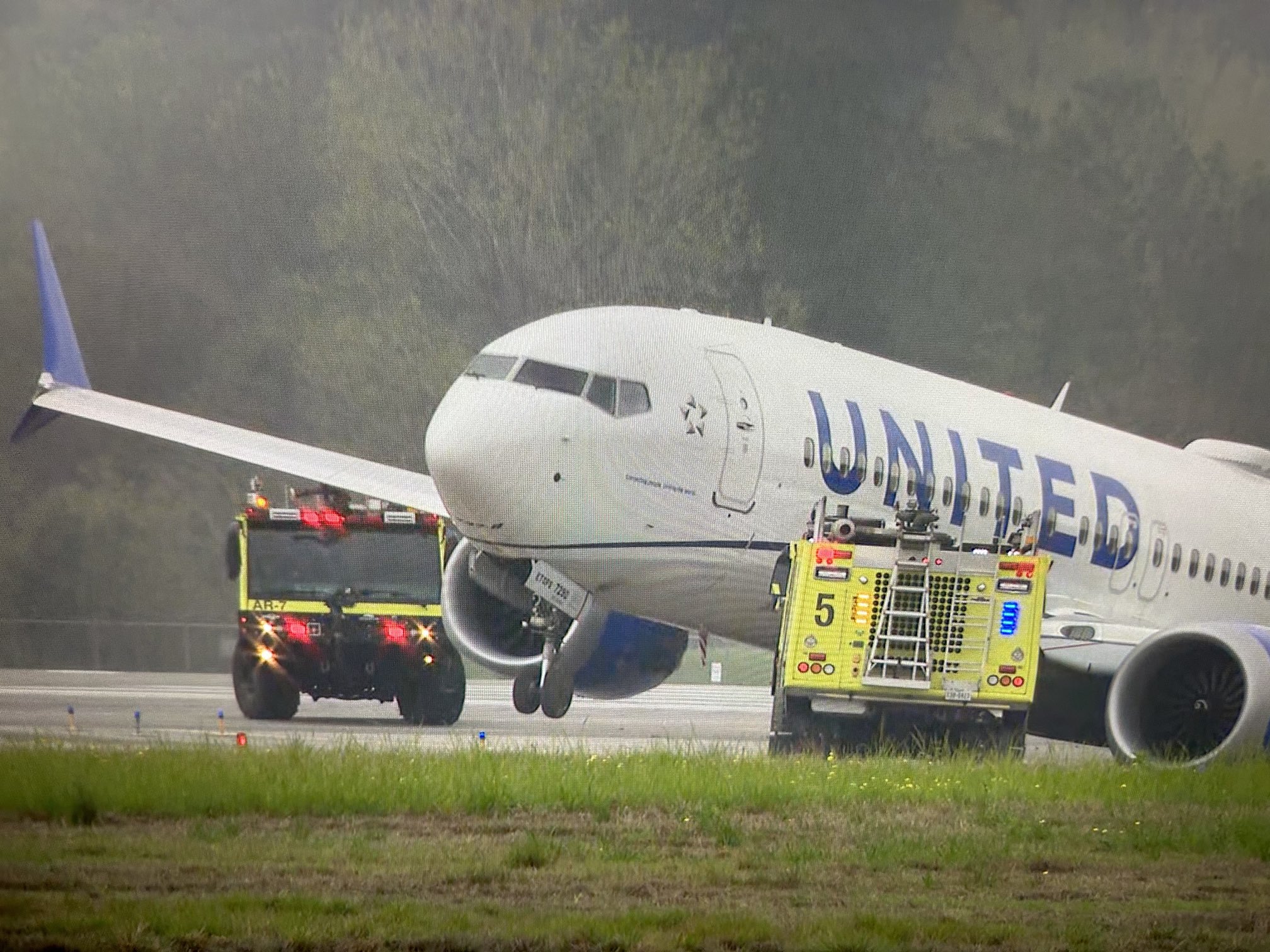United Airlines faced its fourth technical incident in one week after an aircraft's landing gear collapsed upon landing at George Bush Intercontinental Airport (IAH) in Houston.

The Incident
The incident occurred sometime during or after the landing of United Airlines flight 2477 on March 8, at around 8:00 a.m. local time. Flight 2477 was arriving from Memphis (MEM), Tennessee. The aircraft involved in the incident and subsequent runway excursion is N27290, a four-year-old Boeing 737 MAX 8 aircraft delivered to United less than one year ago.
Flight 2477 was routine, departing Memphis (MEM) at 6:27 a.m. local time and landing in Houston (IAH) at 7:57 a.m. before suffering a landing gear collapse. The aircraft ended up in a ditch on its belly, nose up, at the end of runway 27 at Houston (IAH).

Audio files from the communications between the air traffic controller handling flight 2477 and the flight pilots have been obtained. In listening to them, it is apparent that the aircraft's landing gear collapsed sometime during landing, as the air traffic controller can be heard giving instructions to flight 2477 about where to turn off the runway as the flight was landing. After the arrival of emergency services to the incident site, all passengers and crew onboard the 737 MAX 8 aircraft were safely deplaned.

The Federal Aviation Administration (FAA) released a statement regarding the incident: "The passengers were deplaned on the taxiway and were bused to the terminal...Please contact the airline [United Airlines] for additional information. The FAA will investigate."

Previous Incidents Involving United
The March 8 incident and runway excursion occurred just a few weeks after a rudder pedal issue occurred on another United 737 MAX 8. This also marks the fourth technical incident at United Airlines in one week and the second in Houston after a United Boeing 737-900 suffered an engine stall earlier. Earlier this week, a United Airlines Boeing 777-200 lost one of its landing gear wheels on departure from San Francisco (SFO). Later in the week, a United Boeing 757-200 suffered an engine failure on the descent to San Francisco (SFO).

Other 737 MAX Incidents
In just three months of 2024, there have already been two major incidents involving the 737 MAX aircraft. The first occurred in January of 2024, when Alaska Airlines Flight 1282, a MAX 9, lost its door plug at 16,000 feet and subsequently experienced an explosive decompression. United Airlines flight 2477 is the second major incident involving the MAX, this time the MAX 8.
Boeing is already under investigation and heavy scrutiny from American regulatory authorities due to shoddy quality control on new 737 MAX aircraft and potentially major issues such as loose bolts and improperly installed plug doors on Boeing MAX 9 aircraft. It is currently unknown who is responsible for the incident.
Inside IndiGo's Game-Changing Order for 30 Airbus A350 Aircraft » PHOTOS: Inside Gulfstream's New G800, the World's Longest-Range Business Jet » This Delaware Firm is Saving FBOs Millions in Hangar Costs »
Comments (0)
Add Your Comment
SHARE
TAGS
NEWS United Airlines Incident Technical Texas Houston Boeing 737 MAX 8 737 MAX 8 InvestigationRECENTLY PUBLISHED
 This Delaware Firm is Saving FBOs Millions in Hangar Costs
When most people picture innovation in the aerospace industry, they envision new airline or aircraft startups that revolutionize the way people travel. But sometimes, the biggest revolutions happen on the ground. One Delaware-based aviation firm is quietly shaping the way airports, FBOs, and MROs move aircraft, and saving them millions of dollars in the process.
STORIES
READ MORE »
This Delaware Firm is Saving FBOs Millions in Hangar Costs
When most people picture innovation in the aerospace industry, they envision new airline or aircraft startups that revolutionize the way people travel. But sometimes, the biggest revolutions happen on the ground. One Delaware-based aviation firm is quietly shaping the way airports, FBOs, and MROs move aircraft, and saving them millions of dollars in the process.
STORIES
READ MORE »
 Air France Announces Paris-Las Vegas Nonstop Service
Air France is expanding its US operations with a new nonstop service from Paris to Las Vegas, significantly enhancing travel options between these two cities. This strategic move not only benefits travelers but also promises economic growth and cultural exchange, while positioning Air France as a key player in the competitive transatlantic market.
ROUTES
READ MORE »
Air France Announces Paris-Las Vegas Nonstop Service
Air France is expanding its US operations with a new nonstop service from Paris to Las Vegas, significantly enhancing travel options between these two cities. This strategic move not only benefits travelers but also promises economic growth and cultural exchange, while positioning Air France as a key player in the competitive transatlantic market.
ROUTES
READ MORE »
 PHOTOS: Inside Gulfstream's New G800, the World's Longest-Range Business Jet
Inside Gulfstream's new G800, showcased at NBAA-BACE 2025.
STORIES
READ MORE »
PHOTOS: Inside Gulfstream's New G800, the World's Longest-Range Business Jet
Inside Gulfstream's new G800, showcased at NBAA-BACE 2025.
STORIES
READ MORE »



